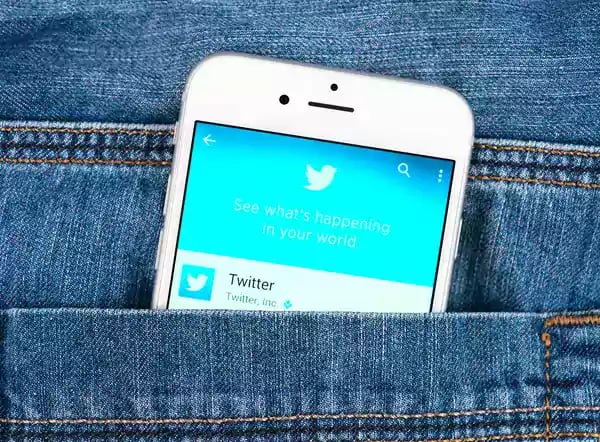“Brand awareness” is fairly self-explanatory. It’s the consumers’ level of awareness of a particular product or brand.

In some cases, like with consumer products used by millions of people (Coca-Cola or Apple, for example), brand awareness is broad and sweeping. In other cases, like with highly specialized niche products, brand awareness must be targeted precisely in order to work. You’re probably not going to sell many dog products to cat owners, as the cliché goes.
Brand awareness has two important components in the mind of the consumer. The first is the instantaneous recognition of a brand. For example, you see the “swoosh” graphic and immediately associate it with Nike. The second crucial element of brand awareness is a more comprehensive recall of experience with that brand. Perhaps you remember that you wore Nike running shoes when you completed your first 10K run, for instance.
Building brand awareness takes different forms for different businesses, but it is essential whether you sell drilling rig equipment, hair salon products, candy, or kitchen utensils. Here’s how to do it.
Use Targeted Marketing
Bernina is a high-end sewing machine brand. Since not nearly as many people sew today as did half a century ago, brand awareness efforts for these products would likely be wasted with ads on the evening news. Today’s sewing machine user base is largely split into older makers who have been sewing for decades, and younger sewers who are newly enthralled with the concept of making custom clothing and other “soft” creations.
Working with Hangar12, Bernina brought together these two groups of sewing aficionados with a series of “upcycling” challenges. This was something the baby boomer sewing enthusiast could get behind—perhaps updating a garment they made a couple of decades ago, and that millennials could also enjoy, putting to use their principles of environmental and economic sustainability with the help of a sewing machine. The results were sensational, with nearly 100% participation by brand dealers, and hundreds of entrants in the competitions.
Reconnect with Former Fans
If you or your children grew up in the 1990s, you’re probably familiar with Sour Punch, a sour candy that comes in several different shapes and flavors. Ask a millennial, and they will probably tell you about convincing their parent to buy them Sour Punch in the supermarket checkout aisle. The brand markets itself to tweens and younger teens, and when millennials approached adulthood, many of them left it behind for more “grown-up” products.
But Sour Punch knew that these young adults still liked the product, and they needed to find ways to reconnect with fans who had now reached adulthood. Working with Hangar12, the brand targeted a young adult rite of passage: Spring Break. By hosting an epic beach party, alongside online contests, the brand literally had college students lining up to participate in their Panama City Beach “Party Plank,” complete with games, competitions, and plenty of sample product. It was a great way to reconnect young adults with a brand they enjoyed during childhood. As a result, Sour Punch gained hundreds of new Facebook fans, and 30,000 spring breakers left with free product samples.
Listen to Both Your Audience and Your Brand’s “Heart”

Raising brand awareness requires that you listen to your target audience. But that doesn’t mean trying to mold the brand into something it fundamentally is not. Your target audience can function as an advisor, and with most brands, quality means more than quantity. It takes time to get to know your target audience, but it’s an investment that pays off. Social media allows us to engage directly with the people who buy our products and support our brand, offering something that customer interaction in the pre-internet days couldn’t approximate.
At the same time as you define and engage with your target audience, it’s important that you not lose sight of what is the truth at the heart of your brand. What is it in terms of function? What kind of emotional impact does your brand have on people? Pretending to be something you’re not doesn’t work for people, and it doesn’t work for brands either.
Time Outreach for Optimal Results
Suppose that as part of your brand awareness campaign, you plan to post a new, original video on social media “next week.” Does that mean that any time between 12:01 a.m. Sunday and 11:59 the following Saturday is a good time? Of course not.
Most brands aren’t on people’s minds 24/7. They come to mind and are meaningful at specific times. If you sell car insurance, people probably are not thinking about your product while playing in their Saturday recreational basketball league. But they may very well be thinking of your product when they’re commuting to or from work in heavy traffic where fender-benders are not uncommon.
Use your analytics, social listening, and consumer interactions to find out when your brand is likely to be on people’s minds. Is it during the work week, or on weekends? What time of day is it? Is it likelier to be one season over another? The better you can sync your messages with the times when your brand is most relevant to potential customers, the more effective your brand-building campaign will be.
Want to add rocket fuel to your retail brand marketing? Enter your information below for instant access to four more essential strategies to build brand awareness.
Don’t Forget About the “Real World”
Digital marketing is such a juggernaut that sometimes we forget that in-person, real-world brand building works wonderfully. Sour Punch candy demonstrated this with its big Spring Break brand awareness campaign. Smaller, local brands, in particular, can benefit from in-person events and local advertising. Other ways that brands can gain exposure in the offline world include sponsoring community events and partnering with other relevant brands in ways that make things easier for consumers. For example, if you are a florist, you might work with a local baker on a partnership that kicks off at the beginning of “wedding season,” raising both businesses' profiles at the same time.
Real-world events are great opportunities to pass out promotional merchandise and free samples. Sure, it’s a technique that has been used since before we can remember, but it’s a technique that has lasted precisely because it’s so effective.
Be Everywhere in Your Niche
Online and offline, if you’re the Forrest Gump of your industry, being present and participating wherever relevant things are happening, you offer a steady drumbeat of brand awareness that becomes ingrained. Doing this may mean providing content on sites other than your own (such as on an influencer’s blog). Or it may mean interacting by adding value on social media sites that people may associate with your brand.

“Being everywhere” does not, however, mean being a buttinsky and pushing your way into conversations where you have nothing of value to say. And it doesn’t mean striving to monopolize all social media in your industry or niche. It can be quiet and brief, such as a simple, “We sell Washi tape in Tiffany Blue” on a social media post by a bride-to-be or wedding planner. As people see your brand in multiple places, and realize that you’re not there to grab the conversation and steer it to your advantage, you can gain enormous social capital.
Use Email Marketing Strategically
Email marketing may seem quaint in an era when we can receive up-to-the-minute, targeted ads as we browse Facebook, roam the supermarket aisles, or walk to our gate at the airport. Yet email marketing can still be a remarkably effective arrow in your brand awareness quiver. It can build strong customer loyalty by allowing you to connect directly with them one-on-one, boost the ROI of any advertising or brand awareness campaign, and establish your brand as a trusted “go-to” brand for consumers.
A McKinsey survey found that email marketing is substantially more effective at bringing in new customers than Facebook and Twitter marketing combined. Successful email marketing skillfully combines several elements. Messages must be personalized and targeted, they should offer subscribers valuable information or other valuables (like discounts or coupons), and they should be part of a long-term plan that isn’t so much concerned with getting the first click, but with establishing a lasting bond with subscribers.
It requires keeping up with key metrics, and making messages, formats, and content evolve along with the marketplace and the target audience, but the bottom line is that email marketing still works well, and can be an excellent tool for raising brand awareness.
Maintain Brand Authenticity
You may be surprised to know just how important brand authenticity is in an era of celebrity-centric culture. Winning the battles for consumer attention doesn’t necessarily mean associating your brand with a celebrity. The truth is, people want authenticity, and they are far more likely to be influenced by a social media post put up by one of their actual friends rather than a celebrity with an endorsement deal.
Sure, there’s a place for influencer marketing, especially when it makes sense for both the brand and the influencer. But real, relatable content matters more and results in deeper, stronger engagement between brand and consumer. Ordinary people who post pictures of themselves enjoying your product can be tremendously valuable, as can fresh, original, well-produced content that is created regularly. Whether or not you use celebrity endorsement or influencer marketing to raise brand awareness, it’s crucial that you maintain your brand authenticity throughout, or your efforts will fall flat.
Hangar12 is at the forefront of CPG marketing strategy and more. Subscribe to our blog to stay up-to-date with our latest insights.